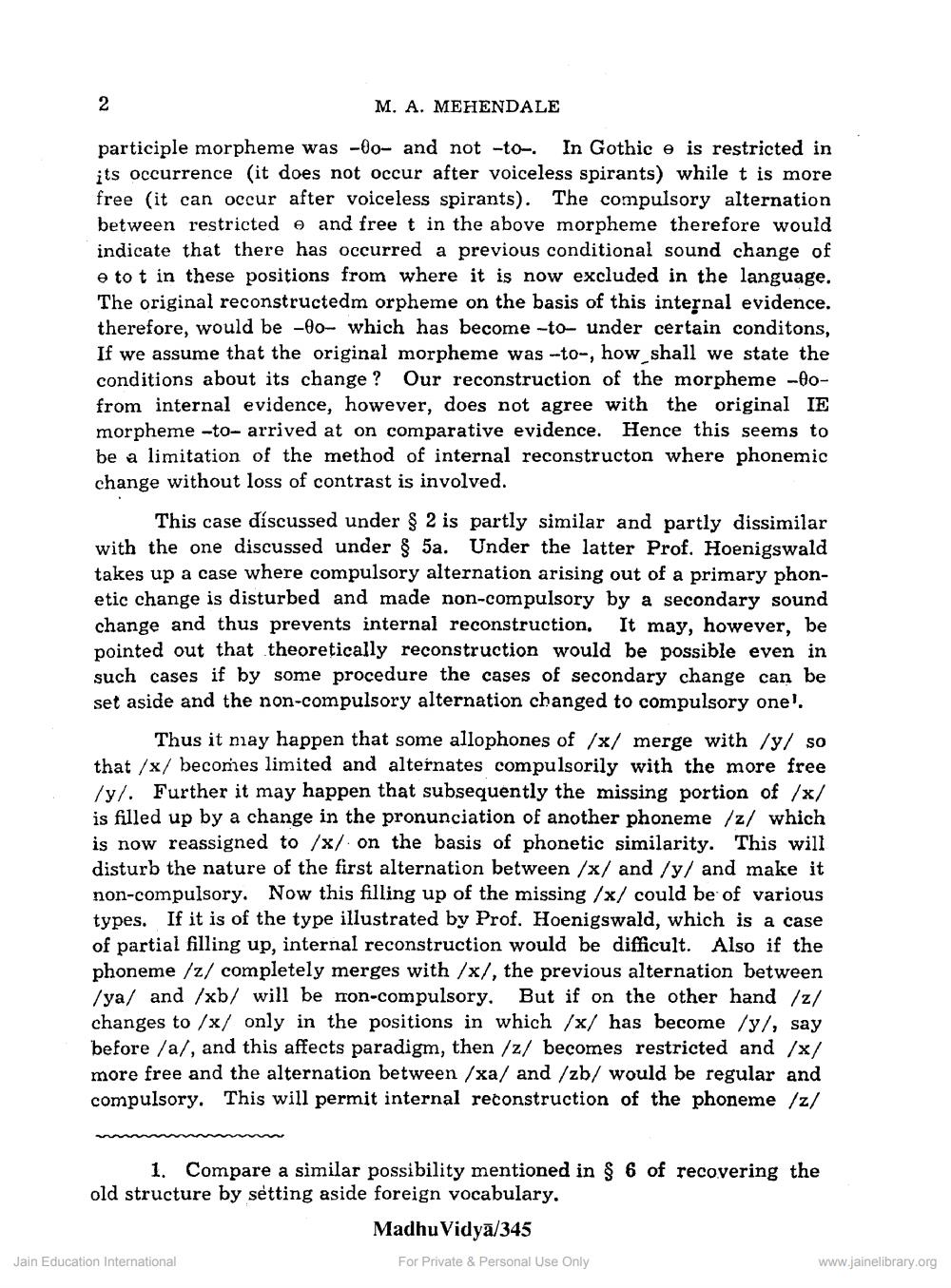________________
M. A. MEHENDALE
participle morpheme was -00- and not-to- In Gothic e is restricted in its occurrence (it does not occur after voiceless spirants) while t is more free (it can occur after voiceless spirants). The compulsory alternation between restricted and free t in the above morpheme therefore would indicate that there has occurred a previous conditional sound change of e to t in these positions from where it is now excluded in the language. The original reconstructedm orpheme on the basis of this internal evidence. therefore, would be -00- which has become-to- under certain conditons, If we assume that the original morpheme was --to-, how shall we state the conditions about its change? Our reconstruction of the morpheme -00from internal evidence, however, does not agree with the original IE morpheme -to-arrived at on comparative evidence. Hence this seems to be a limitation of the method of internal reconstructon where phonemic change without loss of contrast is involved.
This case discussed under $ 2 is partly similar and partly dissimilar with the one discussed under $ 5a. Under the latter Prof. Hoenigswald takes up a case where compulsory alternation arising out of a primary phonetic change is disturbed and made non-compulsory by a secondary sound change and thus prevents internal reconstruction. It may, however, be pointed out that theoretically reconstruction would be possible even in such cases if by some procedure the cases of secondary change can be set aside and the non-compulsory alternation changed to compulsory one!
Thus it may happen that some allophones of /x/ merge with /y/ so that /x/ becomes limited and alternates compulsorily with the more free /y/. Further it may happen that subsequently the missing portion of /x/ is filled up by a change in the pronunciation of another phoneme /z/ which is now reassigned to /x/ on the basis of phonetic similarity. This will disturb the nature of the first alternation between /x/ and /y/ and make it non-compulsory. Now this filling up of the missing /x/ could be of various types. If it is of the type illustrated by Prof. Hoenigswald, which is a case of partial filling up, internal reconstruction would be difficult. Also if the phoneme /z/ completely merges with /x/, the previous alternation between /ya/ and /xb/ will be non-compulsory. But if on the other hand /z/ changes to /x/ only in the positions in which /x/ has become /y/, say before /a/, and this affects paradigm, then /z/ becomes restricted and /x/ more free and the alternation between /xa/ and /zb/ would be regular and compulsory. This will permit internal reconstruction of the phoneme /z/
1. Compare a similar possibility mentioned in § 6 of recovering the old structure by setting aside foreign vocabulary.
Madhu Vidyā/345 Jain Education International For Private & Personal Use Only
www.jainelibrary.org




